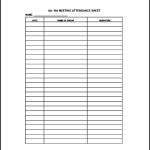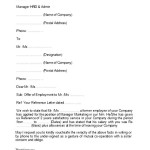Advertising Plan Agenda
Advertising Plan Agenda: A Comprehensive Guide Advertising plans are the backbone of any successful marketing campaign. A well-structured agenda ensures that your team stays focused, efficient, and ultimately achieves the desired results. This document outlines the key elements to include in your advertising plan agenda, providing a roadmap for effective campaign execution. **1. Introduction & Objectives (15 minutes)** * **Welcome and Introductions:** Begin with a warm welcome to all participants, setting a positive and collaborative tone. Briefly introduce each member of the team and their respective roles. This fosters a sense of ownership and shared responsibility. * **Review of Previous Campaign Performance (If Applicable):** If this plan builds upon previous efforts, start by analyzing the successes and shortcomings of past campaigns. What worked well? What could be improved? Quantify the results with specific data points, such as click-through rates, conversion rates, and return on investment (ROI). * **Defining Overall Marketing Objectives:** Clearly state the overall marketing objectives that the advertising campaign aims to achieve. These objectives should be SMART (Specific, Measurable, Achievable, Relevant, and Time-bound). Examples include: * Increasing brand awareness by 20% within the target demographic in the next quarter. * Generating 500 new qualified leads per month through online advertising. * Boosting website traffic by 30% through a content-driven advertising campaign. * **Advertising Campaign Goals (Specific to the Plan):** Once the overarching marketing objectives are defined, translate them into specific, measurable goals for the advertising campaign itself. For example: * Increase ad click-through rate by 15% through improved ad copy and targeting. * Reduce cost per acquisition (CPA) by 10% through optimization of ad bids and landing pages. * Drive 200 product demo requests through a targeted social media campaign. * **Agenda Overview:** Briefly outline the topics to be covered in the meeting, ensuring everyone is aware of the agenda and expected outcomes. This helps maintain focus and efficiency throughout the discussion. **2. Target Audience Analysis (30 minutes)** * **Review Existing Customer Data:** Leverage your CRM data, website analytics, and social media insights to gain a deep understanding of your current customer base. Identify their demographics, psychographics, buying behaviors, and pain points. * **Identify and Define Target Audience Segments:** Based on the data, segment your target audience into distinct groups with shared characteristics. This allows for more personalized and effective advertising. Create detailed buyer personas for each segment, including their motivations, goals, and challenges. * **Target Audience Needs and Pain Points:** Delve into the specific needs and pain points of each target audience segment. Understand what problems they are trying to solve and how your product or service can help them. This understanding will inform your messaging and creative development. * **Competitive Landscape Analysis (Audience Perspective):** Analyze how your competitors are targeting the same audience segments. Identify their strengths and weaknesses, and look for opportunities to differentiate your advertising efforts. * **Refine Target Audience Based on Objectives:** Ensure that the identified target audience aligns with the stated advertising campaign goals. Adjust the targeting criteria if necessary to maximize reach and relevance. **3. Media Strategy & Channel Selection (45 minutes)** * **Brainstorm Potential Advertising Channels:** Explore a wide range of advertising channels, including: * Search Engine Marketing (SEM): Google Ads, Bing Ads * Social Media Advertising: Facebook, Instagram, LinkedIn, Twitter, TikTok * Display Advertising: Banner ads, programmatic advertising * Video Advertising: YouTube, pre-roll ads * Native Advertising: Sponsored content on relevant websites * Email Marketing: Targeted email campaigns * Print Advertising: Magazines, newspapers, brochures * Out-of-Home (OOH) Advertising: Billboards, posters, transit ads * **Evaluate Channel Suitability Based on Target Audience:** Assess the suitability of each channel based on the identified target audience segments. Consider their online behavior, preferred platforms, and media consumption habits. * **Prioritize Channels Based on Budget and ROI Potential:** Rank the potential channels based on their estimated ROI and alignment with the campaign budget. Focus on channels that offer the greatest potential for reaching the target audience and achieving the desired results. * **Develop Channel-Specific Strategies:** For each selected channel, develop a detailed strategy outlining the specific tactics, messaging, and creative assets that will be used. * **Allocate Budget Across Channels:** Distribute the advertising budget across the selected channels, taking into account their ROI potential and strategic importance. Regularly monitor performance and reallocate resources as needed. **4. Creative Development & Messaging (30 minutes)** * **Discuss Key Messaging Themes:** Identify the core messaging themes that will resonate with the target audience and effectively communicate the value proposition of your product or service. * **Brainstorm Creative Concepts:** Generate a variety of creative concepts for each advertising channel, considering different formats, visuals, and call-to-actions. * **Review Examples of Successful Ads (Inspiration):** Analyze examples of successful advertisements from your industry and beyond, identifying key elements that contributed to their effectiveness. * **Develop Style Guide (Brand Consistency):** Create a style guide to ensure brand consistency across all advertising materials, including logo usage, color palettes, typography, and tone of voice. * **Outline A/B Testing Plan (Messaging and Creatives):** Plan for A/B testing of different messaging and creative variations to optimize performance and identify the most effective approaches. **5. Budget & Timeline (15 minutes)** * **Review Detailed Budget Breakdown (Channel-Specific):** Present a detailed breakdown of the advertising budget, allocating funds to each channel and activity. * **Establish Key Milestones and Deadlines:** Define key milestones for the campaign, such as creative development, media buying, launch date, and reporting deadlines. * **Create Gantt Chart or Project Timeline:** Visualize the timeline using a Gantt chart or other project management tool to ensure that all tasks are completed on schedule. * **Assign Responsibilities and Accountabilities:** Clearly assign responsibilities for each task and hold individuals accountable for meeting deadlines. **6. Measurement & Reporting (15 minutes)** * **Identify Key Performance Indicators (KPIs):** Define the key performance indicators (KPIs) that will be used to measure the success of the advertising campaign. These KPIs should align with the stated objectives and goals. Examples include: * Click-through rate (CTR) * Conversion rate * Cost per click (CPC) * Cost per acquisition (CPA) * Return on ad spend (ROAS) * Website traffic * Lead generation * Brand awareness * **Define Reporting Frequency and Format:** Establish the frequency of reporting (e.g., weekly, monthly) and the format of the reports (e.g., dashboards, spreadsheets). * **Identify Reporting Tools and Technologies:** Select the tools and technologies that will be used to track and report on campaign performance. * **Establish Process for Data Analysis and Optimization:** Define a process for regularly analyzing campaign data and making adjustments to optimize performance. **7. Q&A and Next Steps (10 minutes)** * **Open Forum for Questions and Clarifications:** Provide an opportunity for all participants to ask questions and clarify any doubts. * **Summarize Action Items and Responsibilities:** Recap the key action items and assign responsibilities to ensure that everyone is clear on their roles and deadlines. * **Schedule Follow-Up Meeting (If Necessary):** Schedule a follow-up meeting to review progress and address any challenges that may arise. * **Thank You and Adjournment:** Thank all participants for their contributions and formally adjourn the meeting. This comprehensive advertising plan agenda provides a solid framework for developing and executing successful advertising campaigns. Remember to adapt this agenda to your specific needs and objectives, and to foster a collaborative and data-driven approach throughout the process. Regular communication and performance monitoring are crucial for maximizing the effectiveness of your advertising efforts.
Advertising Plan Agenda :
Advertising Plan Agenda was posted in October 29, 2025 at 2:59 am. If you wanna have it as yours, please click the Pictures and you will go to click right mouse then Save Image As and Click Save and download the Advertising Plan Agenda Picture.. Don’t forget to share this picture with others via Facebook, Twitter, Pinterest or other social medias! we do hope you'll get inspired by SampleTemplates123... Thanks again! If you have any DMCA issues on this post, please contact us!




